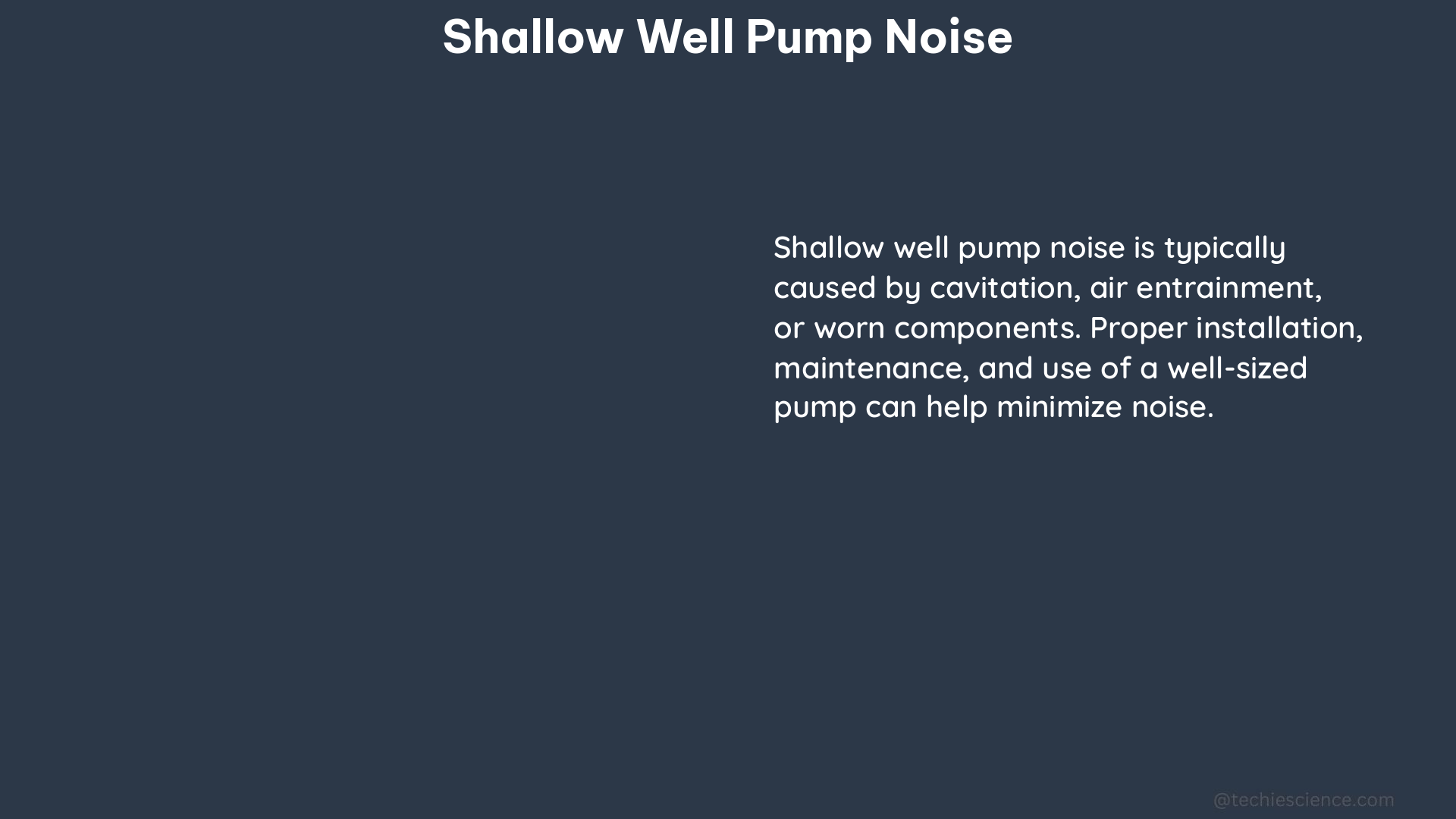Shallow well pumps are essential components of many residential and agricultural water systems, providing a reliable source of water from underground aquifers. However, when these pumps start to produce excessive noise, it can be a sign of underlying issues that require prompt attention. In this comprehensive guide, we’ll delve into the various causes of shallow well pump noise and provide a step-by-step approach to diagnose and address the problem.
Understanding Shallow Well Pump Noise
Shallow well pumps can generate a variety of noises, ranging from a low hum to a loud, grinding sound. These noises can be caused by a multitude of factors, including worn-out bearings, winding issues, leaks, or improper priming procedures. To effectively troubleshoot and resolve the noise issue, it’s crucial to have a thorough understanding of the technical specifications of the pump, the static water level in the well, and the pump’s performance data.
Measuring and Quantifying Shallow Well Pump Noise

To diagnose and address the noise issue, it’s essential to gather measurable and quantifiable data. This data can provide valuable insights into the root cause of the problem and guide the appropriate course of action. Here are some key data points to consider:
Decibel (dB) Levels
Decibel meters can be used to measure the noise produced by the shallow well pump in its operational state. This data can be compared to the manufacturer’s specifications or acceptable noise levels for the environment. Typical acceptable noise levels for a shallow well pump range from 50 to 70 dB, depending on the pump’s size and power output.
Vibration Measurements
Accelerometers can be used to measure the vibration levels of the shallow well pump. Excessive vibration can be a sign of issues with bearings, motor windings, or other mechanical components. Acceptable vibration levels typically range from 0.1 to 0.5 inches per second (in/s) for smaller pumps and 0.5 to 1.0 in/s for larger pumps.
Power Consumption
Measuring the power consumption of the shallow well pump can help identify winding issues or other electrical problems that may be causing the noise. Typical power consumption for a shallow well pump can range from 0.5 to 3 kilowatts (kW), depending on the pump’s size and horsepower.
Flow Rate and Pressure
Measuring the flow rate and pressure of the water being pumped can help identify issues with the pump’s performance and efficiency, which can contribute to noise production. Typical flow rates for shallow well pumps range from 5 to 30 gallons per minute (GPM), and typical pressure ranges from 20 to 60 pounds per square inch (PSI).
Static Water Level
Measuring the static water level in the well can help identify issues with the pump’s priming procedure or the overall design of the well system. Typical static water levels for shallow wells can range from 10 to 50 feet below the surface.
Diagnosing and Addressing Shallow Well Pump Noise
Once you have gathered the necessary data, you can begin the process of diagnosing and addressing the shallow well pump noise. Here are the steps to follow:
-
Identify the Source of the Noise: Using a screwdriver as a stethoscope can help you pinpoint the location of the noise within the pump. This can provide valuable clues about the underlying issue.
-
Check for Leaks: Inspect the pressure switch line for any leaks, as suggested in the references. Air being sucked into the pump can cause noise and decreased performance.
-
Verify the Priming Procedure: Ensure that the pump is being primed correctly, as suggested in the references, to prevent issues with air in the system.
-
Inspect the Bearings: If the noise is coming from the bearings, they may need to be greased or replaced, as suggested in the references.
-
Evaluate the Motor Windings: If the noise is caused by winding issues, the motor may need to be replaced or rewound, as suggested in the references.
-
Optimize the Well System: If the static water level is too low or the well system is not properly designed, it may be necessary to make adjustments to the well or consider a different pump model.
By following these steps and utilizing the measurable and quantifiable data, you can effectively diagnose and address the shallow well pump noise, ensuring the continued reliable operation of your water system.
Conclusion
Shallow well pump noise can be a frustrating and potentially costly issue, but with the right approach, it can be resolved. By understanding the technical specifications of the pump, gathering measurable data, and following a systematic troubleshooting process, you can identify and address the root cause of the noise. Remember to always prioritize safety and consider consulting a professional if you’re unsure about any aspect of the repair process.
References
- Reddit Discussion on Shallow Well Pump Noise
- DIY Stack Exchange Question on Noisy and Slow Shallow Well Jet Pump
- YouTube Video on Troubleshooting Shallow Well Pump Noise

The lambdageeks.com Core SME Team is a group of experienced subject matter experts from diverse scientific and technical fields including Physics, Chemistry, Technology,Electronics & Electrical Engineering, Automotive, Mechanical Engineering. Our team collaborates to create high-quality, well-researched articles on a wide range of science and technology topics for the lambdageeks.com website.
All Our Senior SME are having more than 7 Years of experience in the respective fields . They are either Working Industry Professionals or assocaited With different Universities. Refer Our Authors Page to get to know About our Core SMEs.